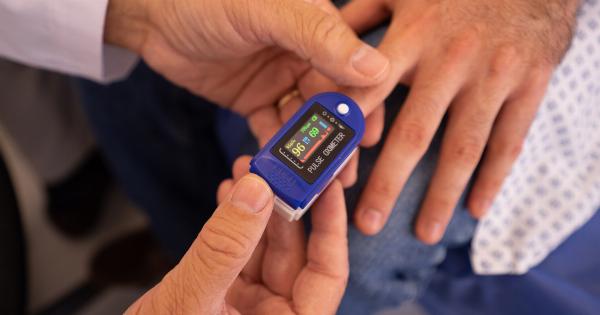Heart failure is a chronic condition that affects millions of people worldwide. It occurs when the heart is unable to pump enough blood to meet the body’s needs.
This can lead to symptoms such as shortness of breath, fatigue, and swelling in the legs and feet. The earlier heart failure is diagnosed, the better the outcome. However, diagnosing heart failure can be challenging, as its symptoms can mimic those of other conditions.
That is why the development of a revolutionary heart failure diagnostic test is so crucial.
What is Heart Failure?
Heart failure is a complex clinical syndrome that involves the inability of the heart to pump blood efficiently. It can be caused by a variety of factors such as high blood pressure, coronary artery disease, and valvular heart disease.
When the heart is unable to pump effectively, blood can back up into the lungs and cause shortness of breath. Fluid can also accumulate in the legs and feet, leading to swelling. It is estimated that over 26 million people worldwide are affected by heart failure.
Current Diagnostic Tests for Heart Failure
The diagnosis of heart failure can be challenging because its symptoms can be non-specific and mimic those of other conditions. The current diagnostic tests used for heart failure include:.
- Blood Tests: Blood tests can detect the presence of certain enzymes that are released when the heart is damaged. They can also measure levels of brain natriuretic peptide (BNP), which is a hormone that is secreted by the heart in response to changes in pressure.
- Electrocardiogram (ECG): An ECG is a test that measures the electrical activity of the heart. It can help diagnose if the heart is damaged from a heart attack or other causes.
- Echocardiogram: An echocardiogram is a test that uses sound waves to create images of the heart. It can detect changes in the structure and function of the heart, which can indicate heart failure.
The Limitations of Current Diagnostic Tests
The above tests are useful in diagnosing heart failure, but they have their limitations. Blood tests and ECGs can provide information about the current state of the heart, but they cannot predict the future risk of heart failure.
Echocardiograms can detect changes in the structure and function of the heart, but they can be expensive, time-consuming, and require a skilled technician to perform and interpret the test.
The Revolutionary Heart Failure Diagnostic Test
A new heart failure diagnostic test called CardioMEMS has been developed by St. Jude Medical. It is a miniature wireless sensor that is implanted in the pulmonary artery of the heart via a catheter.
Once implanted, it can detect changes in pressure in the artery, which are early indications of heart failure. The sensor sends the data wirelessly to a secure website, where the patient’s healthcare provider can monitor the patient’s condition and adjust medications or treatment plans accordingly.
The Advantages of CardioMEMS
CardioMEMS has several significant advantages over current diagnostic tests. Firstly, it can detect changes in pressure in the pulmonary artery, which are early indications of heart failure.
This enables healthcare providers to adjust treatment plans before the patient’s condition deteriorates. Secondly, because the sensor is implanted in the body, it provides continuous monitoring of the patient’s condition, rather than a single snapshot of information.
Thirdly, because the data is sent wirelessly, there is no need for the patient to travel to a medical facility for a follow-up appointment, which can be especially beneficial for patients who live in rural areas.
The Results of Clinical Trials
Clinical trials of CardioMEMS have shown promising results. The CHAMPION study evaluated the safety and efficacy of the CardioMEMS sensor in 550 patients with Class III heart failure.
The study found that those who had the CardioMEMS sensor implanted had significantly fewer hospitalizations for heart failure than those who received standard care alone. Additionally, a study published in the New England Journal of Medicine found that patients who had the CardioMEMS sensor implanted had a 28% reduction in hospitalizations for heart failure compared to those who received standard care alone.
The Future of Heart Failure Diagnosis
The development of CardioMEMS is a significant breakthrough in the diagnosis and treatment of heart failure. As further research is conducted, it is likely that the use of this sensor will become more widespread.
The hope is that this technology will improve patient outcomes and reduce the burden on healthcare systems by reducing hospitalizations and emergency room visits related to heart failure.
Conclusion
Heart failure is a chronic condition that affects millions of people worldwide. Early diagnosis is crucial for optimal patient outcomes. Current diagnostic tests have their limitations, which is why the development of CardioMEMS is so significant.
The CardioMEMS sensor provides continuous monitoring and early detection of changes in pressure in the pulmonary artery, which are critical indicators of heart failure. Clinical trials have shown significant reductions in hospitalizations for heart failure, which has the potential to improve patient outcomes and reduce healthcare costs.























